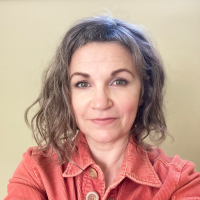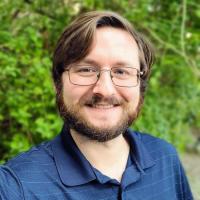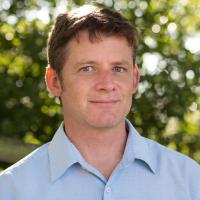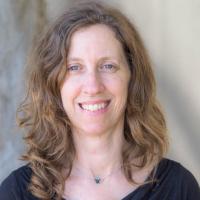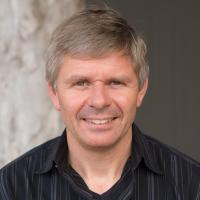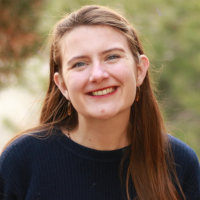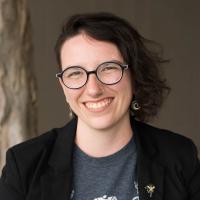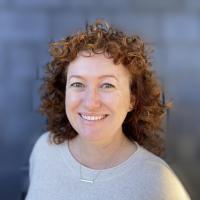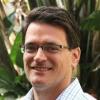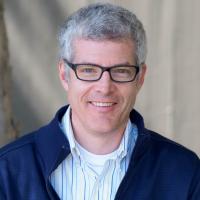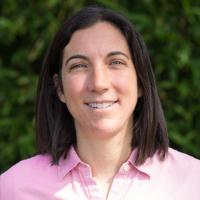Clean Water Program
Our Program and Focus Areas
Water Quality Science Informing Stewardship
 SFEI’s Clean Water Program is one of the nation’s premier water quality science programs. It anticipates and meets the water quality data needs of policy-makers, resource managers, and the public. It helps the public, regulators, and those who discharge into our waters create more effective policies to ensure the health of our waters. The Clean Water Program consists of several programs and initiatives:
SFEI’s Clean Water Program is one of the nation’s premier water quality science programs. It anticipates and meets the water quality data needs of policy-makers, resource managers, and the public. It helps the public, regulators, and those who discharge into our waters create more effective policies to ensure the health of our waters. The Clean Water Program consists of several programs and initiatives:
- The Regional Monitoring Program for Water Quality in San Francisco Bay (Bay RMP) — Now in its 22nd year, the RMP is the flagship of the Clean Water Program. The RMP is a model program to present decision makers with the best available science on pollution in San Francisco Bay. The RMP combines high quality science, forward planning, public forums, and the delivery of clear and actionable data to watershed managers and the public.
- SFEI has helped develop the Delta RMP to inform better policy-making for Delta water quality, and is about to begin the first year of monitoring. As with its Bay-focused predecessor, the Delta RMP will provide the science to drive lower-cost, more efficient and effective regulations. This science will benefit the Delta’s many users, from farmers to fisherman, boaters to residents.
- SFEI is the scientific lead for the San Francisco Bay Nutrient Strategy, to address the most complex and costly issue confronting the wastewater treatment community since the Clean Water Act mandated secondary treatment 40 years ago.
- Our Green Chemistry research fills critical needs of agencies involved in efforts to prevent pollution by advising manufacturers about safer options.
- The Green Infrastructure initiative provides scientific support and innovative tools for long-term planning of water infrastructure upgrades to achieve green alternatives, improved water quality, and sustainability.
For more information on the SFEI Clean Water Program, please contact Program Directors Jay Davis, Ph.D. and David Senn, Ph.D.
Events and Meeting Materials
 The Bay Regional Monitoring Program (RMP) provides water quality regulators and policy-makers with information they need to manage the Bay effectively. The RMP is an innovative collaborative effort between SFEI, the Regional Water Quality Control Board, and the regulated discharger community. The Program was established in 1993, and has an annual budget of $3.5 million.
The Bay Regional Monitoring Program (RMP) provides water quality regulators and policy-makers with information they need to manage the Bay effectively. The RMP is an innovative collaborative effort between SFEI, the Regional Water Quality Control Board, and the regulated discharger community. The Program was established in 1993, and has an annual budget of $3.5 million.
RMP Manager: Melissa Foley Lead Scientist: Jay Davis
Pollutants that accumulate in the food web (or “bioaccumulate”) are impairing the health of aquatic ecosystems throughout California. Methylmercury bioaccumulation is a particularly widespread and severe problem, and poses a serious threat to human and wildlife health across the state. Monitoring information will provide an essential foundation for control plans and exposure reduction plans to remedy bioaccumulation problems in California water bodies. In addition, effective communication of this information to the public is imperative to enable fish consumers to reduce their exposure to pollutants.
However, California still lacks the comprehensive monitoring, assessment, and communication needed to adequately support management of bioaccumulative pollutants in California water bodies. There are multiple problems with the status quo:
- insufficient information on spatial extent and long-term trends, high priority topics such as contaminants of emerging concern (CECs) and biotoxins, and the relative importance of different sources and environmental factors that drive bioaccumulation;
- inefficiencies due to a lack of coordination between agencies, and between agencies and regulated entities;
- a need for pilot scale actions to reduce bioaccumulation accompanied by refinement of monitoring tools to track the effectiveness of the actions;
- safe eating guidelines are needed for many additional water bodies, but the current pace of development is slow due to funding limitations,
- a need for optimizing the effectiveness of communication to the public in support of exposure reduction, and
- insufficient access to data and information for regulators, scientists, and the public.
Efficient use of the limited funds available for monitoring, assessment, and communication is of paramount importance. This efficiency can be achieved through close coordination of programs and thoughtful strategic planning. California needs a central entity with the responsibility and authority to convene a forum to attain the degree of coordination and cooperation that is required to address the bioaccumulation problem. The Bioaccumulation Oversight Group (BOG) has been established as a work group of the California Water Quality Monitoring Council to fulfill this role. A Strategy for Coordinated Monitoring, Assessment, and Communication of Information on Bioaccumulation in Aquatic Ecosystems in California has been prepared by the BOG to outline steps that should be taken to improve bioaccumulation monitoring, assessment, and communication in California.
 SFEI acts as the scientific lead for developing and implementing the Bay’s Nutrient Management Strategy. In this role, SFEI staff work with teams of regional scientists to develop the necessary scientific understanding to allow regulators and stakeholders to make informed decisions about i) whether the Bay is trending toward nutrient-related impairment; ii) what nutrient reductions are needed to mitigate or prevent impairment; and iii) sub-regional and regional approaches that achieve necessary reductions and yield the highest ratios of overall benefits to cost.
SFEI acts as the scientific lead for developing and implementing the Bay’s Nutrient Management Strategy. In this role, SFEI staff work with teams of regional scientists to develop the necessary scientific understanding to allow regulators and stakeholders to make informed decisions about i) whether the Bay is trending toward nutrient-related impairment; ii) what nutrient reductions are needed to mitigate or prevent impairment; and iii) sub-regional and regional approaches that achieve necessary reductions and yield the highest ratios of overall benefits to cost.
Overview:
San Francisco Bay receives high anthropogenic loads of the nutrients nitrogen and phosphorous - higher than many other US estuaries that experience nutrient-related water quality impairments such as excessive algal blooms, low dissolved oxygen and fish kills, and blooms of toxin-producing algae. Until recently, the Bay was considered to have innate strong resistance to high nutrients. However, recent observations suggest that the Bay is experiencing a “regime shift” toward higher sensitivity to nutrients. The Bay’s true trajectory is cloaked in uncertainty. One plausible scenario is that the Bay’s current level of resistance will be maintained and no further degradation will occur. Another equally plausible scenario is that the Bay’s resistance to nutrients will continue to decline until moderate to severe impairment occurs in some subembayments.
Treated wastewater from the Bay Area’s 42 publicly owned treatment works (POTWs) is a major nutrient source Bay-wide. Waters entering the Bay from the heavily-farmed Central Valley act as another large nutrient source that disproportionately influences the northern Bay. Upgrading POTWs to substantially decrease nutrient loads will come at enormous public expense: $2-10 billion. That expense is undoubtedly justified if nutrients are indeed causing (or will eventually lead to) impairment, and if reducing POTW loads will mitigate or prevent that impairment. However, the scientific foundation needed to explore those issues needs to be developed.
Bay Area POTWs describe nutrients as the most complex and costly issue confronting them since the Clean Water Act mandated secondary treatment 40 years ago. Regulators and dischargers are highly engaged and seeking alignment. In that sense, nutrients also represent an enormous opportunity: a catalyst for sub-regional and regional water and wastewater planning to achieve multiple long-term objectives.
Our Team in the Clean Water Program
The San Francisco Estuary Institute comprises over sixty scientists, technologists, and designers who offer a wide range of expertise. Each team member, in her or his own way, helps to define environmental problems, advance public debate about them through sound science, and support consensus-based solutions that improve environmental planning, management, and policy development.
Projects Related to the Clean Water Program
 GreenPlan-IT
GreenPlan-IT
Green infrastructure (GI), such as permeable pavement, rain gardens, tree-well planters, or bioswales, can be used as cost-effective, resilient approaches to managing stormwater at its source while delivering environmental, social, and economic benefits for your community. GreenPlan-IT is a versatile open-source toolset that helps aid municipalities with their efforts to plan and evaluate the placement of green infrastructure in the landscape and track the effectiveness of these installations in reducing stormwater run-off, PCB, and mercury in receiving waters.
 Russian River Watershed Projects at the San Francisco Estuary Institute
Russian River Watershed Projects at the San Francisco Estuary Institute
Our projects in the Russian River Watershed help us to understand our past, understand our present, and envision our future. Learn more about what SFEI is doing in partnership with others to advance our scientific understanding of this valuable landscape.
 Contaminant Data Download and Display (CD3)
Contaminant Data Download and Display (CD3)
Contaminant Data Display and Download Tool or CD3 is an innovative visualization tool for accessing water quality data for the San Francisco Bay-Delta and northern montane regions. It is the primary tool for accessing and downloading the San Francisco Bay Regional Monitoring Program’s (RMP) long-term dataset and other project data stored in SFEI's Regional Data Center (RDC).
Satellite remote sensing will aid the State of California in assessing cyanobacterial bloom threats to animal and human health across the state’s numerous large lakes.
 Contaminants of Emerging Concern Strategy
Contaminants of Emerging Concern Strategy
More than 100,000 chemicals have been registered or approved for commercial use in the US. For many of these chemicals, major information gaps limit evaluations of their potential risks, and environmental monitoring of these chemicals has not been required by regulatory agencies. Nevertheless, researchers and government agencies have begun to collect occurrence, fate, and toxicity data for a number of these chemicals.
 SF Bay Nutrients Visualization Tool
SF Bay Nutrients Visualization Tool
This visualization tool facilitates intuitive comparison of continuous data from around the Bay, and across a variety of analytes, to demonstrate the potential for collaborative monitoring across programs.
 Safe to Eat Portal
Safe to Eat Portal
Fish and shellfish are nutritious and good for you to eat. But some fish and shellfish may take in toxic chemicals from the water they live in and the food they eat. Some of these chemicals build up in the fish and shellfish - and in the humans that eat fish and shellfish - over time. Although the chemical levels are usually low, it is a good idea to learn about advisories and monitoring in water bodies where you fish, and for fish or shellfish you eat.
 Archive Sample Tool
Archive Sample Tool
The Archive Sample Tool provides a web interface that SFEI researchers can use to browse the RMP archives when considering using archive material for a study. The RMP has been collecting archive samples during each sampling event for sediment, bivalve, fish and birds since the early 1990's. These samples are available to SFEI researchers with RMP Program Manager approval, and can be requested directly from the tool.
 Flood Control 2.0
Flood Control 2.0
Flood Control 2.0 is an ambitious regional effort aimed at helping restore stream and wetland habitats, water quality, and shoreline resilience around San Francisco Bay. The project leverages local resources from several forward-looking flood control agencies to redesign major flood control channels so that they provide both future flood conveyance and ecological benefit under a changing climate. This timely project will develop a set of innovative approaches for bringing environmental benefits and cost-savings to flood protection efforts at the mouths of creeks that drain to San Francisco Bay.
- ‹ previous
- 2 of 3
- next ›
Publications related to the Clean Water Program
The Institute has collectively produced more than 1300 reports, articles, and other publications over the course of its 24-year existence. The following list represents those publications associated with this individual program and its focus areas.
Year of Publication: 2024
. 2021 Update to Copper Rolling Average. Richmond, CA: San Francisco Estuary Institute; 2024 . Report No.: 1164.  (556.45 KB)
(556.45 KB)
. 2021 Update to Cyanide Rolling Averages. Richmond, CA: San Francisco Estuary Institute; 2024 .  (552.88 KB)
(552.88 KB)
. 2024 Quality Assurance Program Plan for The Regional Monitoring Program for Water Quality in San Francisco Bay. Richmond, CA: San Francisco Estuary Institute; 2024 . Report No.: 1169.  (4.07 MB)
(4.07 MB)
. Development of Semi-Empirical Light Extinction Estimates for Biogeochemical Modeling Applications in San Francisco Bay. Richmond, CA: San Francisco Estuary Institute; 2024 . Report No.: 1177.  (8.71 MB)
(8.71 MB)
. Modeling Stormwater Loads of Contaminants of Emerging Concern: Literature Review and Recommendations. Richmond, CA: San Francisco Estuary Institute; 2024 . Report No.: 1131.  (468.55 KB)
(468.55 KB)
. Multi Year Plan 2024. Richmond, CA: San Francisco Estuary Institute; 2024 . Report No.: 1167.  (3.3 MB)
(3.3 MB)
. Selenium Concentrations in Water and Clams in North San Francisco Bay, 2019-2020. Richmond, CA: San Francisco Estuary Institute; 2024 . Report No.: 1116.  (970.15 KB)
(970.15 KB)
. Water Year 2024 RMP Near-Field Water Sampling and Analysis Plan. 2024 . Report No.: 1154.  (12.85 MB)
(12.85 MB)
Year of Publication: 2023
. 2023 Bay Prey Fish and Near-field / Margins Sediment Sampling and Analysis Plan. Richmond, CA: San Francisco Estuary Institute; 2023 . Report No.: 1141.  (406.78 KB)
(406.78 KB)
. 2023 RMP Dry Season Water Cruise Plan. Richmond, CA: San Francisco Estuary Institute; 2023 . Report No.: 1139.  (3.21 MB)
(3.21 MB)
. 2023 RMP Sediment Cruise Sampling and Analysis Plan. Richmond, CA: San Francisco Estuary Institute; 2023 . Report No.: 1138.  (445.99 KB)
(445.99 KB)
. 2023 RMP Update. Richmond, CA: San Francisco Estuary Institute; 2023 . Report No.: 1148.  (37.75 MB)
(37.75 MB)
2023 Status and Trends Monitoring - Sampling Plans and QA Reports. 2023 .  (3.21 MB)
(3.21 MB) (13.36 MB)
(13.36 MB) (445.99 KB)
(445.99 KB) (406.78 KB)
(406.78 KB)
. 2024 Detailed Workplan and Budget. 2023 .  (548.24 KB)
(548.24 KB)
- 1 of 98
- next ›


